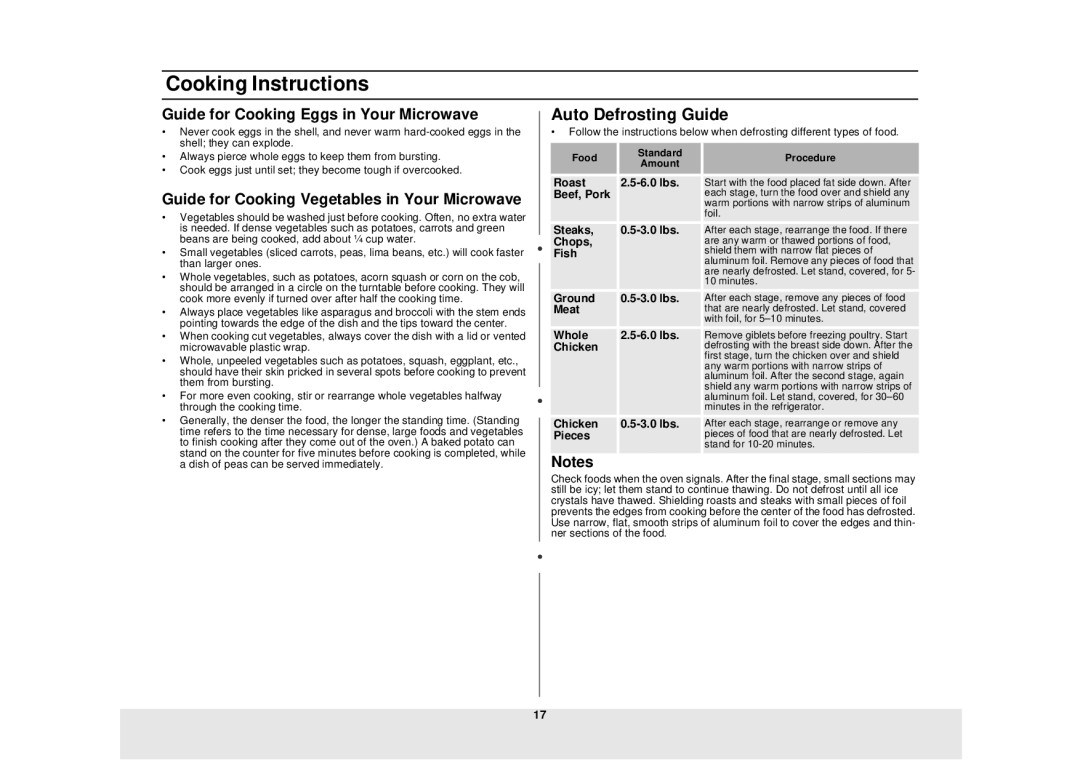MW1040WC, MW1240WC, MW1240BC, ME1480STC, ME1240SC specifications
Samsung is known for its innovation and quality in the home appliance sector, and its microwave ovens are no exception. The Samsung ME1440SC, MW1040BC, MW1040WC, ME1280STC, and MW1240BC each offer a unique set of features and technologies tailored to meet the demands of modern kitchens.The Samsung ME1440SC is a versatile microwave that boasts a 1.4 cubic foot capacity. Its ceramic enamel interior ensures easy cleaning and hygiene, while the eco mode helps reduce energy consumption, making it both practical and environmentally friendly. With its sleek design paired with 10 power levels and a one-touch cooking feature, this model makes meal prep quick and efficient.
Moving to the MW1040BC and MW1040WC, these models feature a similar capacity of 1.0 cubic foot but differ in their external finishes. The MW1040BC showcases a classic black stainless steel, while the MW1040WC presents in a clean white finish, catering to different aesthetic preferences. Both models include Samsung's innovative sensor cooking technology, which automatically adjusts cooking time and power for the perfect results. This ensures that dishes come out evenly cooked, whether heating leftovers or preparing a gourmet meal.
The ME1280STC presents a slightly larger option with a capacity of 1.2 cubic feet. This model is designed for larger families or entertaining guests, and it features a sleek, modern look along with 10 power levels. Additionally, its eco mode and energy-saving features conform to contemporary sustainability practices, making it a smart choice for eco-conscious consumers.
Lastly, the MW1240BC retains a robust 1.2 cubic feet of cooking capacity, similar to the ME1280STC. It also includes Samsung's signature ceramic enamel interior, further promoting a hygienic cooking environment along with ease of cleaning. Equipped with multiple cooking presets and a digital display, this microwave oven combines user-friendly features with advanced technology, promising a seamless cooking experience.
In summary, the Samsung ME1440SC, MW1040BC, MW1040WC, ME1280STC, and MW1240BC embody the brand's commitment to quality, convenience, and style. Each model is designed to meet specific culinary needs, ensuring that every homeowner can find the perfect fit for their kitchen. With cutting-edge technology and a focus on energy efficiency, these microwaves represent the future of home cooking.

